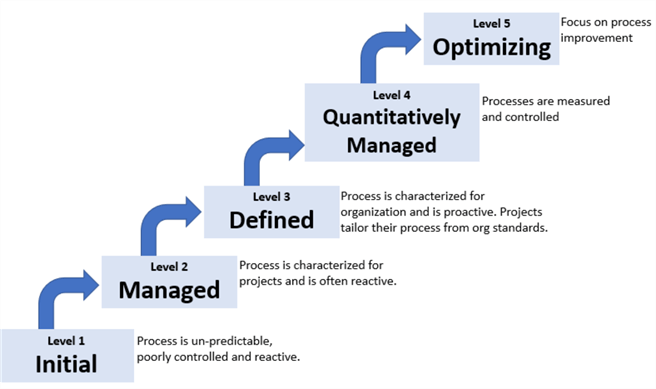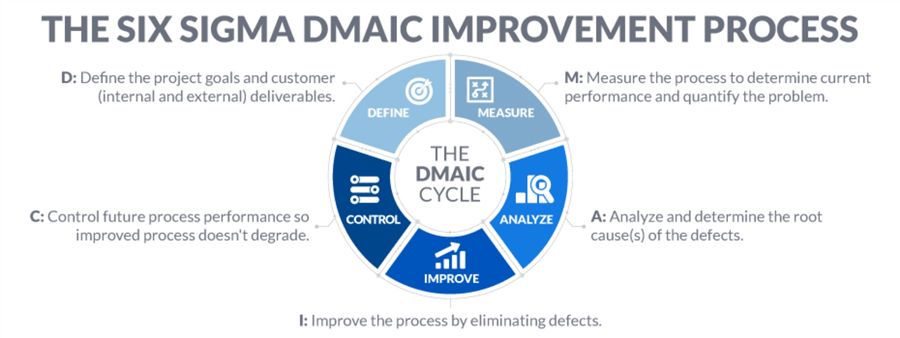By: Ron L'Esteve | Updated: 2022-07-28 | Comments | Related: 1 | 2 | 3 | 4 | 5 | 6 | > Cloud Strategy
Problem
Organizations are constantly evaluating and tuning their processes, frameworks, and methodologies to ensure that they consistently deliver excellence. At its core, the process of delivering excellence requires a culture of innovation and a data strategy. Customers often ask what a Culture of Innovation and a Data Strategy means and how they can get started.
Solution
While it is the goal and aspiration of every transformational Cloud Adoption program and project to deliver end-to-end expected deliverables successfully, the process of delivering projects with high levels of 'excellence' involves deep planning and coordination and is oftentimes easier said than done. As complex situations escalate, leaders will be called upon to help de-escalate complex situations and pave the path to success. Delivery Excellence is both an art and science to get right. It often begins by having the right foundations in place as it relates to an 'Innovation Culture' and a 'Data Strategy'. Structured frameworks, data strategies, and innovative mindsets coupled with deep delivery experience help with channeling this 'excellence' factor. In this article, you will learn more about the need for cultures of innovation and an excellent Data Strategy.
Cultures of Innovation
An organization that embraces change, empowers a growth mindset, and prioritizes business value-generating goals, is destined to achieve sustained success and growth. A successful organization requires clarity, transparency, and investment from leadership. This can be achieved by leadership by setting the tone for the pace and effectiveness of change through several avenues. To support innovation, it will be critical to provide clear communication on 'change agents' and their roles and remove obstacles that prevent innovation. Additionally, investments in time and effort to plan, communicate, govern and influence change and innovation will go a long way.
Modern technology and automation solutions will evolve. It is the people that are the greatest assets that truly drive innovation towards delivering excellence and business value. The skills of people take time and effort to nurture and it is well worth the investment in the long run. An innovation culture driven by both a challenger and a growth mindset is key for resource training, upskilling, and successful self-directed development. As much as consulting services vendor organizations desire to have consultants achieve high utilization rates, budgeting time for learning, development, and innovation, projects will go a long way to support the health and growth of employees. Additionally, the idea of 'Role Redundancy' is not always a bad thing and can often promote innovation and growth when an employee adds a level of automation to their assigned work which in turn frees up their time and effort so it can be dedicated to other innovative work. High attrition adversely impacts a variety of organizational initiatives such as culture, growth, CoEs, standards, and more. Companies with high tenure rates typically live by an innovation culture fueled by growth and accountability.
Data Strategy
Investing time and effort into devising a sound organizational data strategy is a prudent decision. Before embarking on a digital transformation and applied innovation project, a data strategy roadmap is what defines a differentiated approach for competitive advantage and puts into motion a plan of action to add business value through innovation, problem-solving, or other tactics to deliver Return on Investment (ROI) and business outcomes. To be truly agile and successful, a data strategy must be both executable and adaptable to evolution and re-evaluation over time. A data strategy must include all aspects of a data platform including management, governance, security, cost, technology, infrastructure, integration, reporting, advanced analytics, and more. It must be capable of mapping current to future states via maturity models and roadmaps. Technical assessments are a great way to identify opportunities for improvement by identifying current state architectures, gaps that lead to future state architectures, and transitional plans to get to these future states. Some organizations leverage the Capability Maturity Model Integration (CMMI), as shown in the figure below, to conduct appraisals and score their organization's maturity levels. This helps with determining how best to design an optimal data strategy.

In addition to CMMI, Six Sigma offers a similar approach for defining organizational strategy, project scoped deliverables, and data management and analytics lifecycles. In its simplistic form, Six Sigma strives to achieve the following:
- Understand a problem
- Identify the current state
- Evaluate options for improvement
- Execute the plan
- Monitor progress by detecting variations and make iterative course corrections along the way.
While Six Sigma's Define, Measure, Analyze, Improve, Control (DMAIC) Methodology has typically been attributed to process improvements and controls in manufacturing and production-line settings, it has begun to catch the eye of strategic leaders within 'data domains' since it applies a practical approach from defining a project, program, and/or strategy to improving and controlling it. The figure below illustrates the DMAIC cycle along with what is intended to be achieved at each stage.

Business Objectives and Goals
Once a data strategy has been identified, it would be useful to compose a functional business objective to determine the goal of a project. For example, the business objective for a cloud transformation project might seek to “Provide a foundational Cloud Data Platform to enable improved data accessibility and operational KPIs geared towards improving business operations and value through an Agile Delivery Framework.” After the business objective has been clearly stated, it will be easier to list out the detailed strategic goals for the initiative that will be undertaken. As an example, the following list begins to capture the strategic goals for a Cloud Data Platform modernization project.
- Design the baseline Data and Analytics Architecture and implement the foundational Cloud operational and development infrastructure via secure ELT pipelines to support data solutions.
- Develop a comprehensive new suite of reports, data models, and advanced analytics capabilities that provide insight into various key metrics to enable business stakeholders to make data-driven business decisions.
Next Steps
- In part 3 of this series on Delivering Cloud Transformation Excellence, you will learn more about a Project's Requirements Envisioning Phase which is comprised of 'Current State Assessments' and 'Future State Design Plans'.
- Read more about the Capability Maturity Model Integration - Wikipedia
- Read more about the phases of the Six Sigma DMAIC Model: What is it? - The Lean Six Sigma Company
- Read more about The 2 Types of Data Strategies Every Company Needs (hbr.org)
- Read more about Innovation in Business: What It Is & Why It's So Important (hbs.edu)
About the author
 Ron L'Esteve is a trusted information technology thought leader and professional Author residing in Illinois. He brings over 20 years of IT experience and is well-known for his impactful books and article publications on Data & AI Architecture, Engineering, and Cloud Leadership. Ron completed his Masterís in Business Administration and Finance from Loyola University in Chicago. Ron brings deep tec
Ron L'Esteve is a trusted information technology thought leader and professional Author residing in Illinois. He brings over 20 years of IT experience and is well-known for his impactful books and article publications on Data & AI Architecture, Engineering, and Cloud Leadership. Ron completed his Masterís in Business Administration and Finance from Loyola University in Chicago. Ron brings deep tecThis author pledges the content of this article is based on professional experience and not AI generated.
View all my tips
Article Last Updated: 2022-07-28






